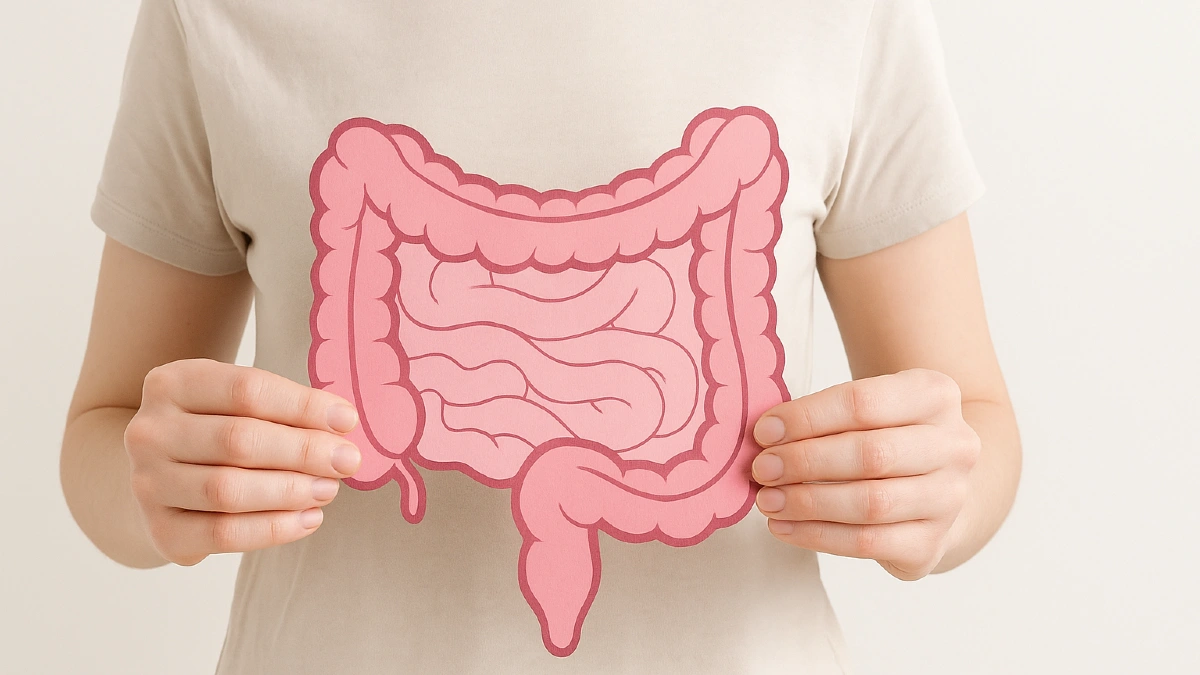Your gut contains trillions of microorganisms that influence everything from immunity to mood. While yogurt and sauerkraut get all the attention, nature provides numerous overlooked foods with remarkable digestive healing properties. These hidden gems work through unique mechanisms—from soothing inflamed tissues to feeding specific beneficial bacteria strains.
Some transform through cooking or cooling, others contain rare enzymes found nowhere else. Each food targets different aspects of gut health, from barrier integrity to microbiome diversity. Ready to discover nature’s pharmacy for your digestive system? These fifteen foods deliver powerful healing compounds backed by both traditional wisdom and modern science.
1. Okra
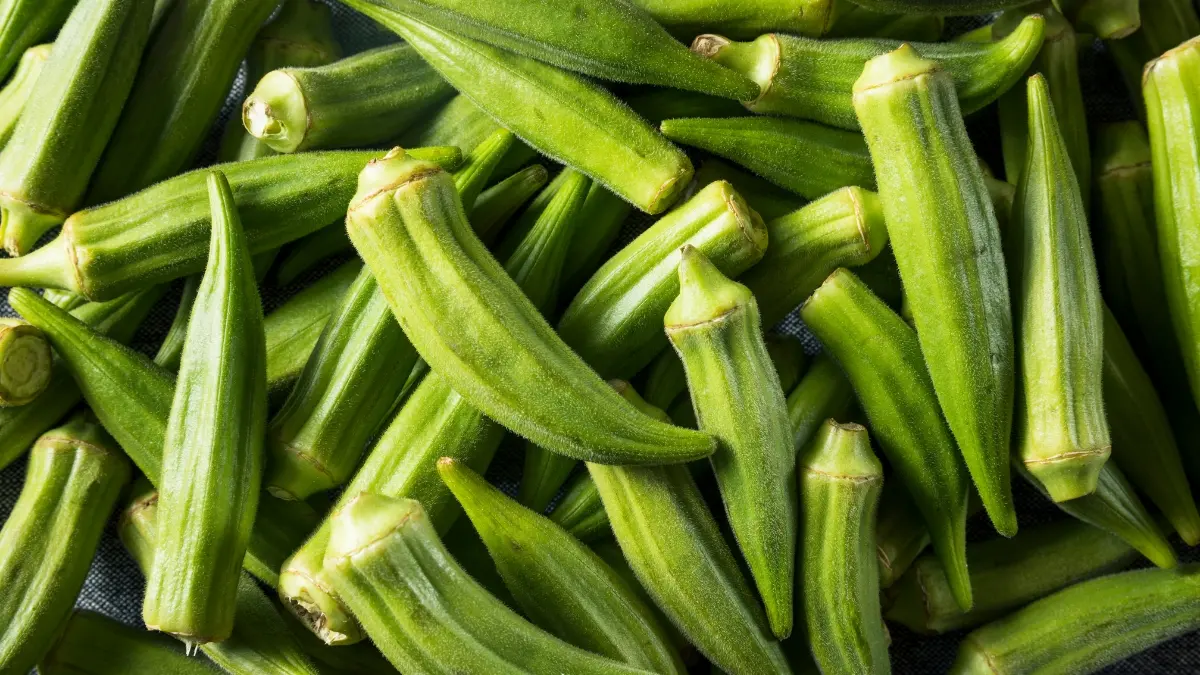
This green pod vegetable contains remarkable mucilage that forms a slippery coating when cooked. The gel-like substance travels through your digestive tract, soothing inflamed tissues along the way. Your beneficial gut bacteria feast on this soluble fiber, producing short-chain fatty acids that nourish colon cells. Studies show regular consumption helps maintain intestinal barrier integrity.
Cooking okra with acidic ingredients like tomatoes or lemon reduces the sliminess while preserving its health benefits. You can roast whole pods until crispy for a nutritious snack or slice them thinly into soups where they serve as natural thickeners. Many traditional cuisines across Africa, South Asia, and the American South have valued okra for generations.
The pod also provides glutathione, an antioxidant that supports detoxification pathways in the gut and liver. For maximum benefit, choose young, tender pods under four inches long.
2. Green Plantains
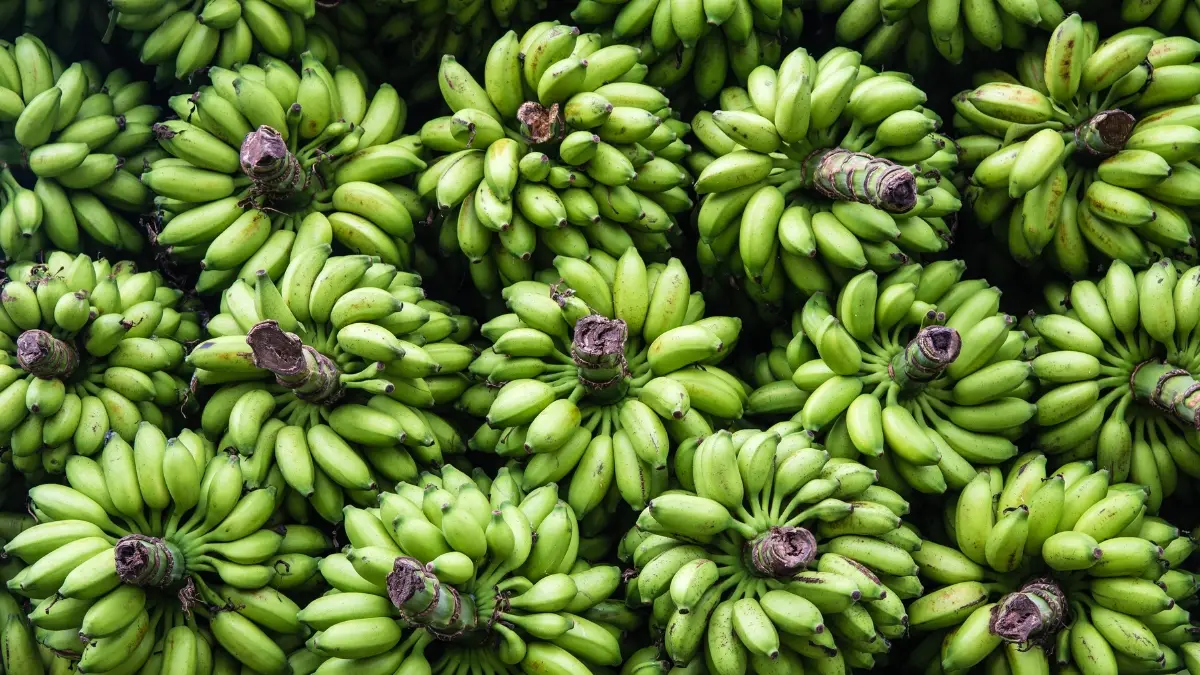
Unripe plantains contain substantial resistant starch that passes undigested through your small intestine. This unique carbohydrate reaches your colon intact, where microbes ferment it into butyrate—a powerful anti-inflammatory compound. Your gut lining uses butyrate as its primary fuel source. Green plantains boost Faecalibacterium prausnitzii, a beneficial bacterial species often depleted in individuals with digestive disorders.
Cooking and cooling plantains increases resistant starch content through a process called retrogradation. You can prepare them boiled, baked into chips, or traditionally mashed into mofongo. The resistant starch content gradually converts to sugar as plantains ripen, so maintain their green color for gut health benefits.
Traditional Caribbean and African cuisines often pair green plantains with protein sources, creating complete meals that support digestive health naturally.
3. Sunchokes
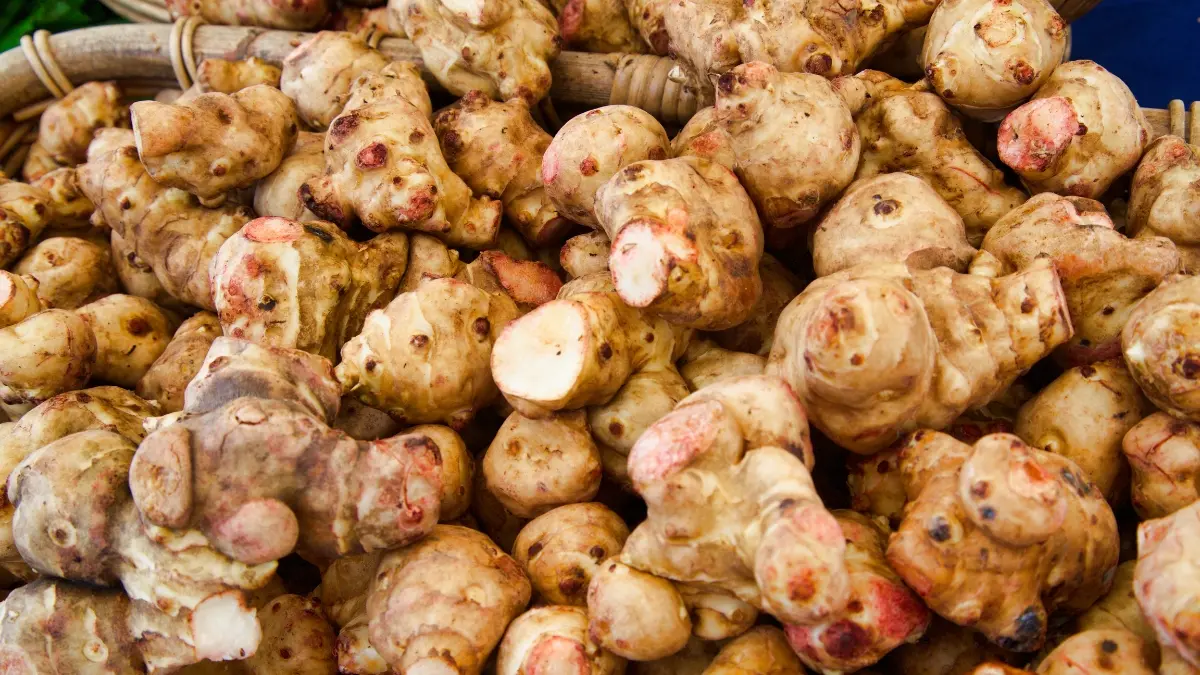
These knobby tubers pack extraordinary amounts of inulin, a prebiotic fiber that specifically nourishes beneficial bifidobacteria in your gut. Consuming sunchokes regularly can improve microbial diversity and reduce intestinal inflammation. Their sweet, nutty flavor resembles artichokes despite no botanical relation.
Cooking methods significantly affect their digestibility—roasting or slow cooking breaks down some inulin, making them gentler on sensitive systems. Start with small portions if new to sunchokes, as their powerful prebiotic effect can cause temporary gas during initial use.
Chef tip: slice them thinly and roast until crispy for natural gut-healing chips. The tubers store energy as inulin rather than starch, making them suitable for blood sugar management while feeding your microbiome. Fall harvests yield the highest inulin content. Regular consumption helps strengthen the intestinal barrier against harmful pathogens while supporting immune function through microbial modulation.
4. Kiwifruit

This fuzzy fruit contains actinidin, a unique enzyme that efficiently breaks down protein molecules throughout your digestive tract. Consuming kiwi after protein-rich meals supports thorough digestion and prevents undigested proteins from causing inflammation. The green flesh also contains soluble fiber that promotes regular bowel movements without irritation.
Research shows eating two kiwifruits daily significantly improves constipation and reduces bloating in functional gut disorders. The tiny black seeds provide additional fiber and omega-3 fatty acids that support gut membrane integrity. Unlike harsh laxatives, kiwi improves motility without depleting beneficial bacteria or causing dependency.
The fruit maintains enzyme activity when eaten raw—cooking denatures actinidin. Both gold and green varieties offer digestive benefits, though green kiwis contain slightly higher enzyme concentrations. Consuming the skin doubles the fiber intake but wash thoroughly first.
5. Natto
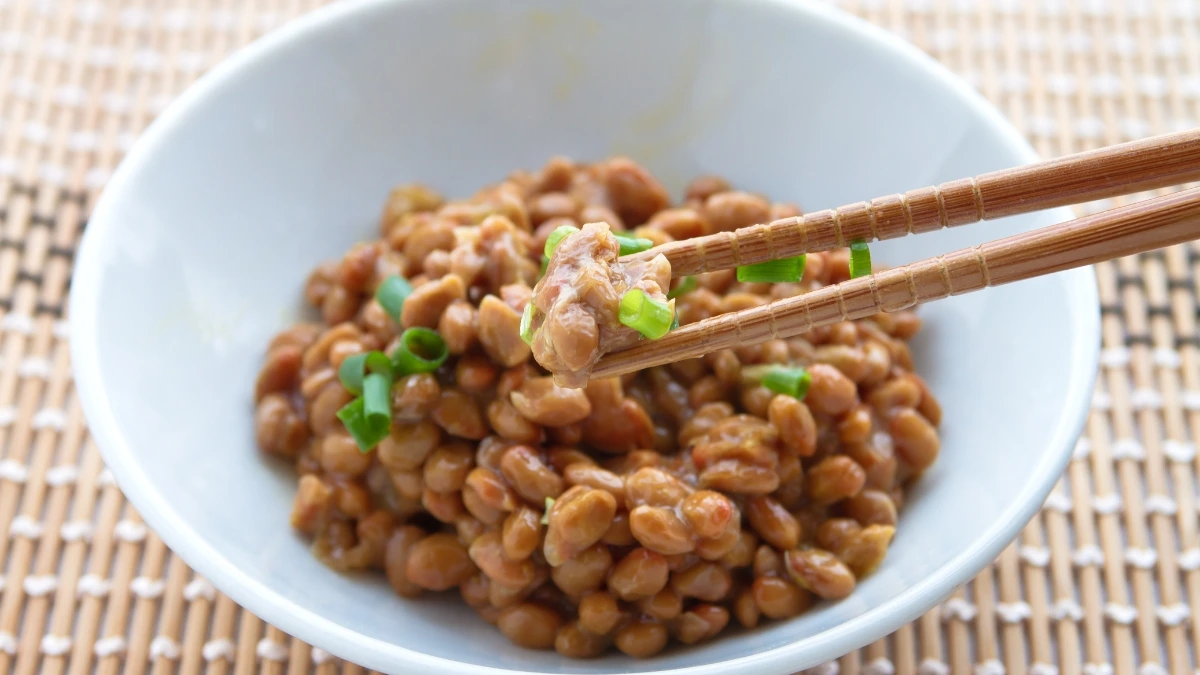
This traditional Japanese food undergoes fermentation by Bacillus subtilis, creating a distinctive stringy texture and powerful aroma. The fermentation process generates nattokinase, an enzyme with remarkable abilities to break down biofilms that harmful bacteria often hide within. Natto contains viable spore-forming probiotics that survive stomach acid and colonize your intestinal tract.
Regular consumers show improved gut barrier function and reduced inflammatory markers throughout the digestive system. The fermentation unlocks bioavailable vitamin K2, creating a gut-vascular connection that supports cardiovascular health alongside digestive wellness. Learn to appreciate its unique taste gradually—start by mixing small amounts into rice or adding traditional toppings like mustard and green onions.
Natto maintains live cultures without refrigeration for short periods, making it practical for travel. Morning consumption on an empty stomach maximizes probiotic colonization potential. The sticky biofilm contains polyglutamic acid that acts as a powerful prebiotic.
6. Tiger Nuts

Ancient Egyptians cultivated these small tubers thousands of years ago, recognizing their digestive healing properties. Despite their name, tiger nuts aren’t actually nuts but small root vegetables with extraordinary prebiotic content. Your gut bacteria thrive on their resistant starch and soluble fiber. Consuming just a handful daily boosts beneficial Bifidobacteria populations while reducing gas-producing species.
Chewing them thoroughly releases their natural sweetness and enhances digestibility. You can soak tiger nuts overnight to soften their texture and make nutrients more accessible. Many Mediterranean cultures use them ground into horchata, a creamy dairy-free beverage that soothes digestive discomfort. Research shows their fiber blend helps normalize bowel movements without irritation.
The tubers contain enzymes amylase and lipase that support your natural digestive processes. Raw tiger nuts offer maximum prebiotic benefit, while roasted varieties provide a convenient crunchy snack. Their unique fiber composition stands out by feeding beneficial microbes throughout the entire colon, not just the descending portion.
7. Black Garlic
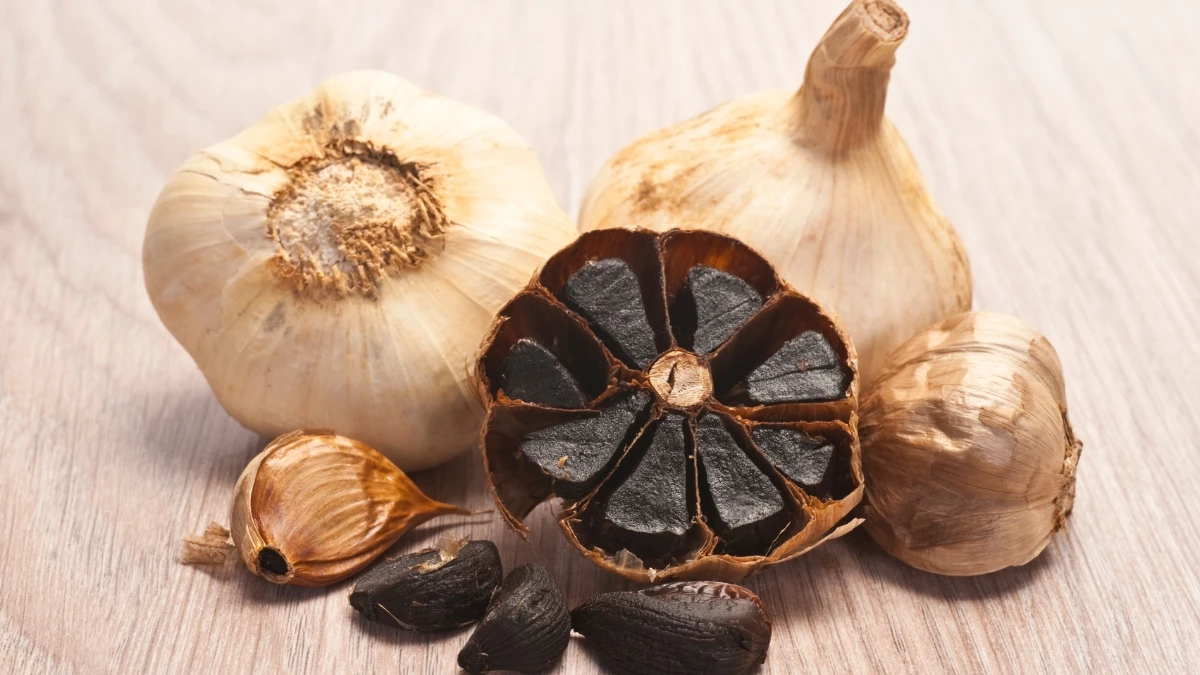
Heat and humidity transform ordinary garlic bulbs into this sweet, umami-rich ingredient through a month-long aging process. The fermentation dramatically increases S-allylcysteine content—a potent antioxidant supporting gut healing. Your intestinal Lactobacillus species multiply when regularly exposed to black garlic compounds. Thermal processing eliminates the pungent allicin of raw garlic while creating new bioactive melanoidins that coat and protect irritated gut tissues.
Chefs prize its complex flavor profile, often describing notes of balsamic, tamarind, and molasses. Studies demonstrate its ability to regulate immune responses in intestinal tissue, reducing inappropriate inflammation. The aging process concentrates prebiotic fructans that specifically nourish Bifidobacteria. Japanese researchers found regular consumption stimulates mucin production, strengthening the protective gut mucus layer.
Incorporating just half a clove daily significantly impacts microbiome composition within weeks. Traditional Korean wellness practices have long utilized black garlic for digestive harmony and immune balance.
8. Seaweed
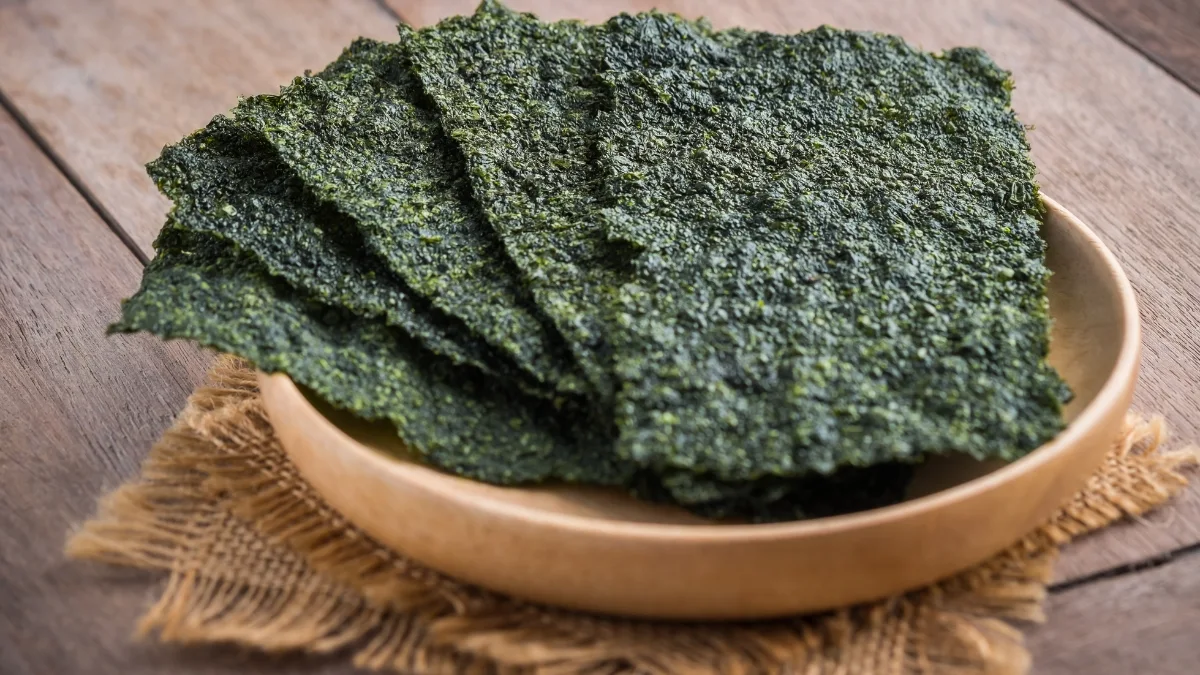
Ocean vegetables contain unique polysaccharides absent in land plants, providing exceptional nourishment for your gut ecosystem. Wakame and kombu stand out with high concentrations of fucoidans—sulfated polysaccharides that prevent pathogenic bacteria from adhering to intestinal walls. Studies confirm regular seaweed consumption reduces inflammatory markers while encouraging beneficial microbe proliferation.
These marine plants contain alginates that bind to heavy metals and environmental toxins, escorting them safely out of your digestive tract. Japanese centenarians commonly consume seaweed daily, correlating with their exceptional gut health into advanced age. The mineral richness supports enzyme production throughout your digestive system. Gentle cooking releases more bioactive compounds from cell walls without destroying delicate nutrients. Integrating small amounts initially helps your digestive system adapt to these powerful foods.
Wakame particularly excels at nourishing Bacteroidetes species often depleted by Western diets. Traditional macrobiotic wisdom recommends consuming sea vegetables with grains for balanced intestinal energy.
9. Cooked and Cooled Red Lentils
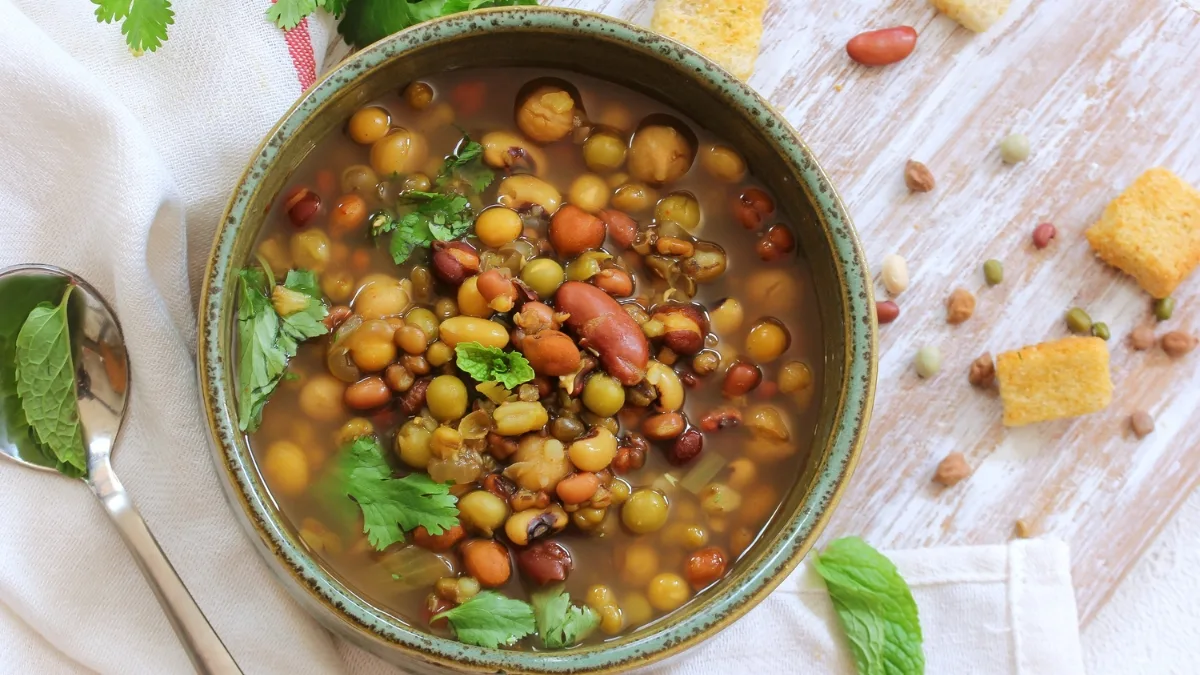
These tiny legumes undergo a remarkable transformation when cooked and then refrigerated. The cooling process rearranges their starch molecules into crystalline structures resistant to digestion in your small intestine. Gut bacteria ferment these resistant starches, producing butyrate that heals the intestinal lining. Studies show consuming cooled lentils triples prebiotic activity compared to freshly cooked ones. You can rewarm them gently without losing much resistant starch.
French and Indian culinary traditions often prepare lentil dishes ahead, unknowingly enhancing their gut-healing properties through this natural cooling period. Their impressive protein content supports intestinal cell regeneration while feeding beneficial microbes. Research participants experienced reduced bloating when consuming cooled lentils compared to other legumes.
The tiny size allows quick cooking without lengthy soaking, making them practical for busy households. Batch cooking and refrigerating creates convenient gut-healing meal components ready for quick assembly. Cold lentil salads provide maximum resistant starch benefits while delivering plant protein and soluble fiber.
10. Pomegranate Arils

Ruby-red jewels packed with powerful polyphenols that undergo a fascinating transformation by your gut bacteria. The ellagitannins travel intact through your digestive system until colon microbes convert them into urolithins—compounds with remarkable anti-inflammatory effects on intestinal tissues. Research shows these metabolites specifically target harmful bacteria while sparing beneficial species.
Consuming the whole arils provides both soluble and insoluble fiber alongside the bioactive compounds. Your microbial community gradually adapts to produce more urolithins with regular consumption. Traditional Persian medicine utilized pomegranates for stomach ailments long before science confirmed their benefits. The seeds contain punicic acid, a unique fatty acid that reduces gut permeability in laboratory studies.
Enjoying pomegranate arils after meals helps neutralize digestive inflammation triggered by challenging foods. Seasonal availability makes them special autumn and winter gut healers when digestive systems often need additional support. Scientists have identified significant microbiome improvements in study participants who consumed pomegranate daily for just three weeks.
11. Camel Milk
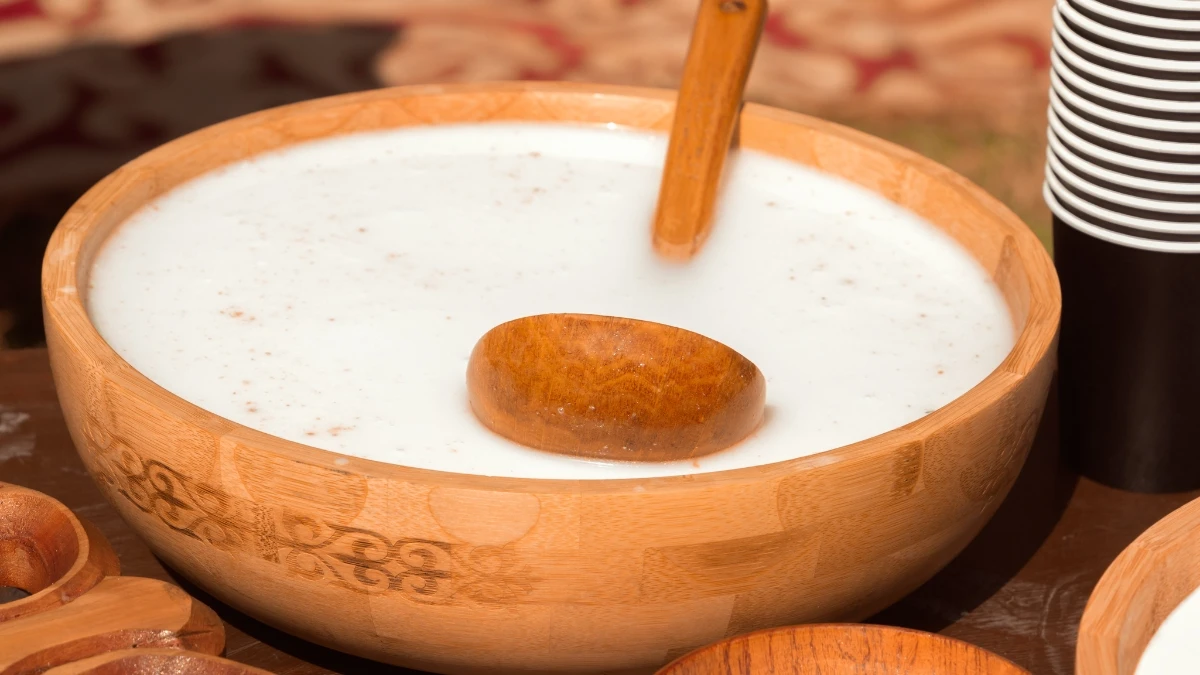
Nomadic cultures have treasured this unique milk for centuries, recognizing its exceptional healing properties for digestive ailments. Unlike cow’s milk, camel milk contains specialized immunoglobulins with molecular structures small enough to pass through the gut barrier intact. These immune proteins target inflammatory cascades directly at their source. Drinking just four ounces daily provides meaningful amounts of gut-specific lysozymes that dissolve pathogenic bacteria without harming beneficial species.
Research shows its peptides help seal leaky junctions between intestinal cells. Many people who react to other dairy tolerate camel milk well due to its different protein composition and natural lactase enzymes. The milk contains lactoferrin that binds free iron in the gut, starving harmful bacteria that require iron for growth. Traditional Bedouin healers prescribe it specifically for gastrointestinal healing.
Modern studies confirm its benefits for reducing inflammatory markers in autoimmune conditions affecting the digestive tract. Fresh camel milk tastes slightly saltier than cow’s milk with subtle sweetness. Frozen options retain most bioactive compounds when fresh sources aren’t available.
12. Sprouted Buckwheat
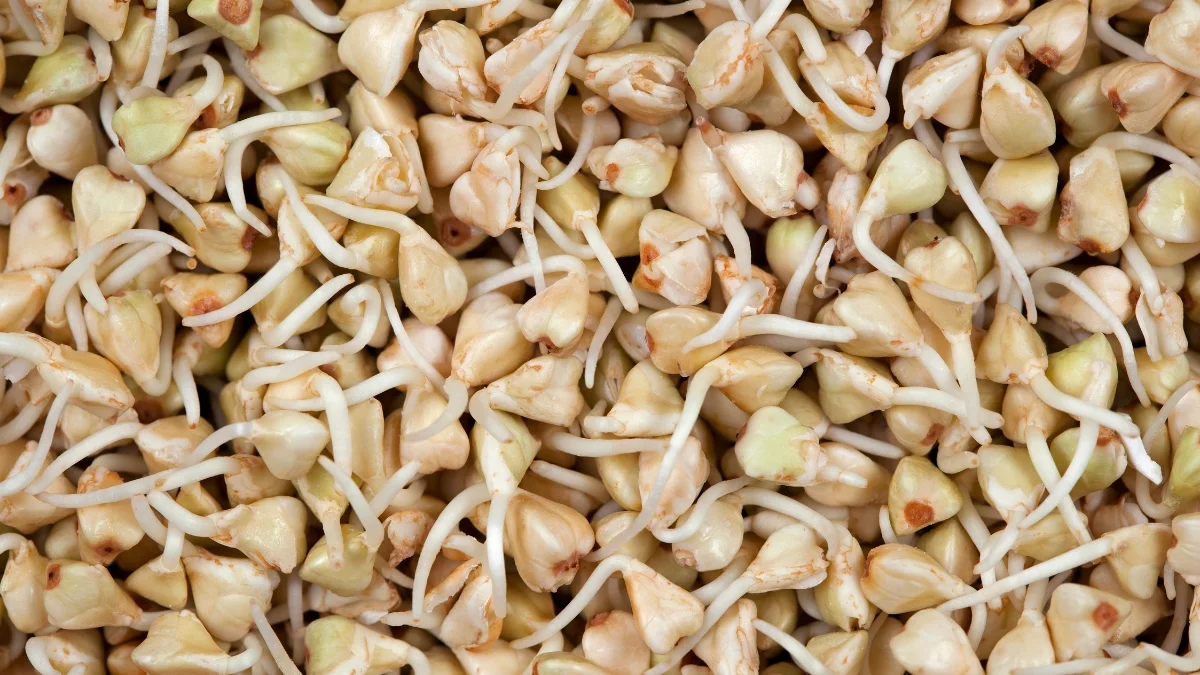
These tiny powerhouses emerge when buckwheat seeds awaken with water, triggering an explosion of bioactive compounds. Sprouting dramatically increases rutin content, a flavonoid that strengthens capillaries in intestinal tissues and reduces micro-bleeding. Your gut microbes feast on their soluble fiber, producing short-chain fatty acids that heal inflamed tissue. Gluten-sensitive individuals safely enjoy sprouted buckwheat as a nutritious pseudo-grain alternative.
Soaking buckwheat for just 30 minutes before cooking improves digestibility, while full sprouting takes about two days. The germination process neutralizes phytic acid that would otherwise bind to minerals and limit absorption. Adding a handful to salads provides a pleasant crunch along with gentle fiber that sweeps the intestinal tract without irritation.
Enzyme levels increase up to six times during sprouting, supporting your digestive processes naturally. Japanese and Russian traditional medicine systems have long used buckwheat sprouts specifically for gut healing. Research demonstrates their ability to reduce inflammatory markers while promoting friendly Lactobacillus species.
13. Amaranth
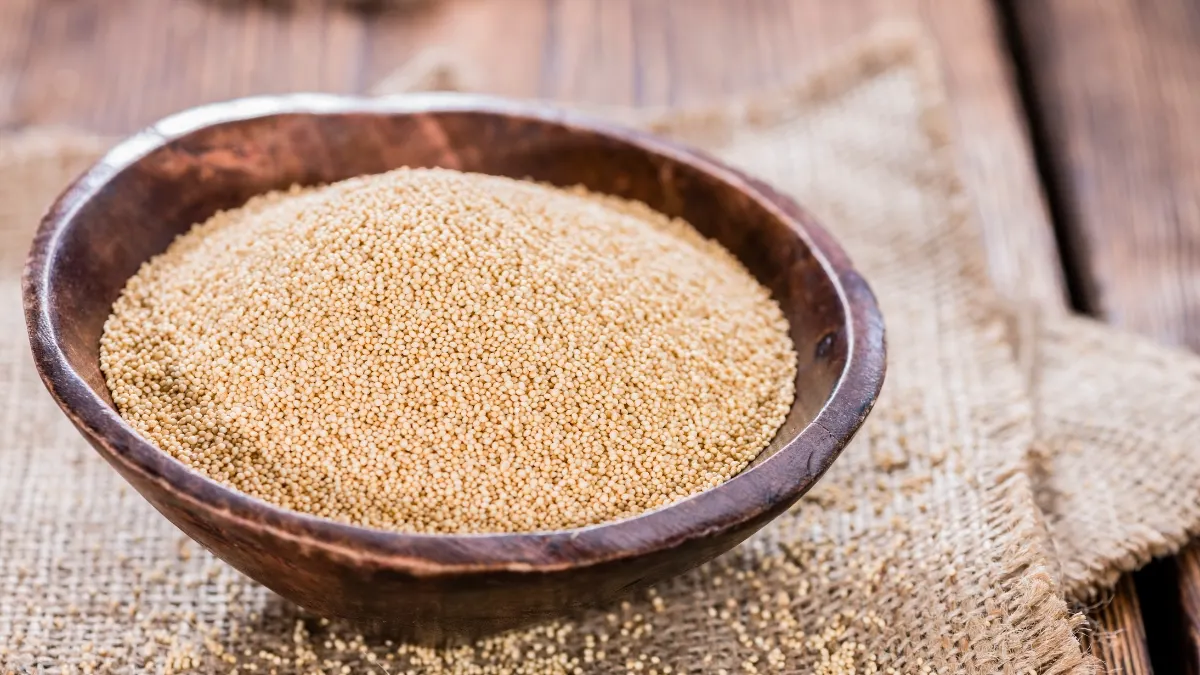
Ancient Aztec warriors consumed this tiny seed before battle, valuing its stamina-building and digestive-strengthening properties. Modern research reveals amaranth contains unique peptides that regulate inflammatory pathways in intestinal tissue. Your beneficial gut microbes efficiently ferment its resistant starches and soluble fiber, creating postbiotic metabolites that heal the gut lining. Cooking amaranth releases bound phenolic compounds that would otherwise pass through unabsorbed.
The seed contains lysine, an essential amino acid often lacking in plant foods that supports cellular regeneration in rapidly-dividing gut tissue. Pop amaranth like miniature popcorn for a crunchy topping that delivers prebiotic benefits. Studies show its consumption increases butyrate production, the preferred fuel for healthy colonocytes. Simmering amaranth creates a porridge that soothes irritated digestive tracts while delivering bioavailable nutrients.
South American traditional healers prescribed amaranth for digestive complaints long before science understood its mechanisms. The complete protein profile supports mucosal cell regeneration while its microbiota-accessible carbohydrates feed beneficial bacteria specifically.
14. Pickled Lotus Root

Sliced into moon-like rings, this aquatic root transforms through fermentation into a powerful gut healer. Traditional Asian medicine practitioners have prescribed pickled lotus root for centuries to restore digestive harmony. Lacto-fermentation creates natural probiotics that establish healthy gut biofilms resistant to pathogen colonization. The root’s unique architecture contains small holes that house prebiotic compounds accessible to beneficial bacteria.
Fermenting lotus root activates otherwise dormant polyphenols that strengthen tight junctions between intestinal cells. Lab studies confirm its ability to reduce inflammatory cytokines within gut tissue specifically. Your digestive system benefits from its gentle fiber that acts as a natural brush along intestinal walls. Consuming small amounts with meals supports proper enzymatic secretion and motility.
Japanese research demonstrates its particular affinity for supporting Bifidobacterium growth. The pickling process preserves the root’s natural tannins that help seal leaky gut junctions. Fresh lotus root contains good nutrients, but the fermentation process creates entirely new bioactive compounds focused on gut healing.
15. Purple Sweet Potatoes

Brilliant violet flesh reveals exceptional concentrations of anthocyanins, pigments with remarkable gut-healing properties. Cooking these vibrant tubers converts their starch into more digestible forms while preserving color-giving antioxidants. Your beneficial Akkermansia muciniphila bacteria flourish when fed purple sweet potato compounds, establishing healthy mucus layers along intestinal walls. Studies show people consuming them regularly experience reduced markers of gut inflammation within weeks.
Steaming preserves more bioactive compounds than other cooking methods. Letting them cool before eating increases resistant starch content by up to 280%, creating powerful prebiotic effects. Japanese Okinawans, famous for longevity, consume purple varieties frequently, correlating with their exceptional gut health metrics. The tubers contain unique anthocyanin profiles not found in berries or other purple foods, with specific affinity for digestive tissue healing.
Soil minerals significantly influence their therapeutic compounds, with volcanic soil producing highest concentrations. Research confirms their consumption increases short-chain fatty acid production throughout the colon. Cooling and reheating cycles further enhance their prebiotic potential through natural retrogradation processes.

